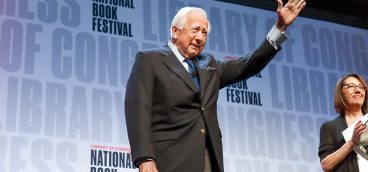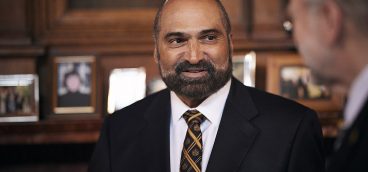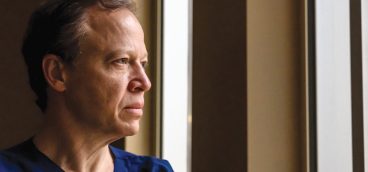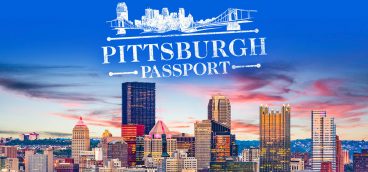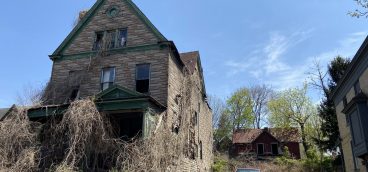
February 1, 2023
For decades, educators fretted over how to prevent “summer slide,” the learning loss that students often experience over summer vacation. The COVID pandemic raised the stakes.
Mounting evidence suggests that periodic school closings, the abrupt shift to remote learning and other disruptions profoundly set back students’ education, accelerating learning loss into a national crisis — a challenge that experts say defies a business-as-usual approach.
Nearly all students lost ground to some degree, studies report; some, much more than others. Even the average student in districts that reopened to in-person instruction relatively quickly lost the equivalent of 10 weeks of instruction, according to a study by Center for Education Policy Research at Harvard University. But learning loss tends to be greater in districts that continued with remote learning last year. Students in low-poverty districts lost 13 weeks of instruction. Students in high-poverty districts lost the equivalent of 22 weeks.
The pandemic eroded gains made over two decades in national reading and math test scores among elementary students, based on National Assessment for Educational Progress tests from 2020-22. Math scores declined for the first time ever. Reading scores reverted to levels last seen in 1990.
To attempt to address COVID-related learning loss, Congress is spending $190 billion in Elementary and Secondary School Emergency Relief (ESSER) as part of the American Rescue Plan. For Allegheny County alone, that amounts to $420 million, at least 20 percent of which must be spent on academic recovery.
The confluence of the crisis and funding to address it has led some education experts to call for adopting bold approaches ranging from long-debated ideas for curbing learning loss to more recent alternatives. Pittsburgh Today examined two of them: Extending the school year and “high-dosage” tutoring.
“We really think there’s an opportunity and a huge urgency for districts this year to gain momentum and put in those big ideas,” said Emily Morton, research scientist at NWEA, an international education research non-profit based in Portland, Ore. “If we don’t address what happened over the past two years, we will disproportionately leave students in high poverty and students of color behind. Achievement gaps will widen over time and will stay wider. And that would be a horrible legacy.”
Extending the School Year
Extending the traditional 180-day school year into the summer rose in popularity in the 1980s, when 37 states considered legislation to reform content and school time after the release of a national report showed the U.S. lagged peer countries in academic achievement. But few states followed through.
President Obama promoted longer school years during his administration, including it in school improvement grants for low-performing schools. Most of the schools that adopted extended year schedules were charter schools. Several have reported that longer years have contributed to their success, including those in the nationwide Knowledge is Power Program (KIPP) network of charter schools in San Francisco, Chicago, New York and Washington, D.C.
Overall, however, research on an extended school year has mixed results. The benefits appear to be limited to certain groups of students. For example, extending the school year has been shown to help English Language Learners and low-income students, but the academic performance gains they experienced are not seen among other students, according to a review of research on the topic from 1985 to 2009 published in the journal, Review of Educational Research.
More recently, Kindergarten through third-grade students in low-income schools in New Mexico attended an extra 25 days of school as part of a five-year study by the University of New Mexico published in 2016. The study found students benefited only under certain circumstances, such as if they had a high rate of attendance, had the same teacher throughout the year, and spoke English, and not Spanish, at home.
One issue, Morton said, is that extended-year strategies have been implemented in greatly varied ways, making it difficult to determine outcomes and, in particular, whether extending the school year can effectively address learning loss across the entire population of students who have been put at risk by the pandemic.
International test scores also raise questions about whether adding more instructional time alone leads to better outcomes. Countries such as Finland, Japan and Norway have fewer hours of instructional time during the school year than the U.S., yet their students consistently outperform U.S. students in math and reading on international assessment exams, such as the Program for International Student Assessment.
Studies consistently report that the quality of instruction is the key factor in boosting academic achievement. Simply adding days to the year isn’t enough. Students don’t learn evenly throughout the school year, according to a recent study on academic growth across the school year from the Annenberg Institute at Brown University. “Where we add those days matters,” said Morton.
“Adding those days to the end of the summer versus adding them spread out throughout the year is different. And thinking about how our teachers are supported using curriculum is important. What do you do with those extra days? Are [teachers] supported and able to make good use of those extra days for students?”
Despite uncertainty over outcomes, a few large U.S. school districts recently decided to extend the school year to see if more days in class will offset pandemic-related learning loss. The Los Angeles Unified School District added four days to the 2022-23 school year after overcoming resistance from parents, teachers and a divided school board. And the Dallas Independent School District allowed schools to choose alternative calendars for the next few years. Of the 230 schools in the district, 41 chose to add five weeks to the school’s year, spreading the additional days from June to August.
In Pennsylvania, extending the school year would be a district-by-district decision. The state requires a minimum of 180 school days a year. Any district could increase its school days with a majority vote of the school board. It gets more complicated when funding is considered. State funding for public school districts is based on 180 days, leaving how to pay for additional days an open question. Extending the year raises other money issues, not the least of which is renegotiating contracts with teachers, bus drivers and other staff. Another is finding and keeping staff.
“Districts are lacking capacity (for) any additional items” this year, said James Fogarty, director of A+ Schools, an education nonprofit focused on Pittsburgh Public Schools. “We’re going to have to be creative.” Districts might have to merge public and private funding or create partnerships with after-school programs in the community or church groups to find ways to add additional time for learning.
One of the biggest challenges is that an extended school year tends to be unpopular. Only 21 percent of parents in school districts that offer voluntary extended-day or summer programs say they enroll their children in them. And in districts that don’t have such programs, only 23 percent of parents say they’d be in favor of having their children enroll if they were offered, according to a national survey done this year by the University of Southern California.
“If I were to characterize the state of parent opinion, it is [that] they really want to go back to normal,” said Morgan Polikoff, associate professor of education at University of Southern California and author of the study. “We might think we’re all better off if we added another 30 days to the school year, but I don’t think there’s an appetite for that. That leaves us with a big [educational] deficit that we’re going to have to chip away at. We’re not going to solve it in a year and it’s going to take a lot of strategies, but most of them are going to have to operate in the confines of the regular school year.”
Something Different
When programs provide quality academic instruction during the summer, students reap academic gains. A 2016 study by RAND Corporation, which included Pittsburgh Public Schools’ summer programming, found that summer reading and math instruction led to improved educational outcomes, as long as the students received more than 25 hours of math and 35 hours of reading instruction and they were taught by certified teachers using a standard curriculum.
The district’s voluntary four-week Summer BOOST program offers three hours of reading and math daily, along with less-academic fare such as cooking and African drumming. “There’s a huge benefit in doing something different,” said Christine Cray, Pittsburgh Public Schools director of student services reforms. “I appreciate being able to take the best of the school year — our dynamic teachers, enthusiasm for learning, great practices that connect with kids socially and emotionally — and toss out what people don’t like about school: standardized testing, homework and that kind of stuff. I don’t know that we want to just add extra time to the school year and not make it different.”
The BOOST program is for Kindergarten through 7th grade only, due to lack of interest from older students. Those students, Cray said, prefer other summer offerings such as classes and apprenticeships through Manchester Craftsmen’s Guild, or working at a summer job.
To address learning loss across grades, most school districts plan to use their federal ESSER funds for in-school interventions, such as double-dose math or two periods of math, and tutoring, according to a spending analysis by FutureEd, a Georgetown University think tank.
For some districts, such interventions aren’t new. “Because our district has historically been underperforming, we have built in interventions and support throughout the school day and there are after school opportunities and then acceleration camps that we’re doing this summer,” said Jamie Schmidt, director of curriculum and instruction at Duquesne City School District. All grade levels have a double block of reading and math. In one period, teachers teach grade level and new content. In the second period, they provide remediation and intervention tailored to each student.
High-dosage Tutoring
Tennessee Department of Education Commissioner Penny Schwinn’s big bet on tutoring is paying off.
She led a charge over the past two years to fast-track initiatives to close pandemic-related learning gaps, including a $200 million program to match trained tutors with students in need of extra academic help across the state. The Tennessee Accelerating Literacy and Learning Corps, as it’s called, pairs groups of no more than four elementary and middle school students with a tutor for two to three 30- to 45-minute lessons a week during the school day. Recently released statewide assessment scores from the 2021-22 school year show student academic performance improved across every tested grade — 77 percent of districts achieved reading scores that were higher than pre-pandemic levels.
“High-dosage tutoring is what has the most research support behind it,” said Morton. “This strategy is being used by a lot of districts.”
A large body of research shows that tutoring works. On average, tutoring resulted in the academic equivalent of students adding on an additional three to 15 months of school, according to a recent review of research on the topic published by the National Bureau of Economic Research.
The biggest challenge is offering quality tutoring to students at scale. As with an extended year, workforce woes are a concern. The outlook for the teaching workforce is bleak. By 2026, an estimated 25 percent of the American teacher workforce is expected to retire, according to U.S. Bureau of Labor Statistics projections. At the same time, enrollment in teacher training programs is plummeting. The total number of students enrolled in teacher preparation programs dropped by more than one-third from 2010 to 2017, according to data from National Center for Educational Statistics.
“We’re really at a crisis point with the teacher workforce pipeline,” said Sarah Toulouse, executive director at ASSET Inc., a Pittsburgh-based education nonprofit focused on educator professional development. “Some of that is natural attrition from retirement age, but there is a large portion that has been exacerbated by the pandemic, burnout and folks looking at early retirement. How do we ensure that these students who are in teaching programs actually go into the teaching profession and stay there? We do know that support and professional learning along the way is critical to their retention.”
Not unlike K-12 students, pre-service teachers — those in training to be the next K-12 instructors — also experienced disruptions to their education. “They weren’t getting access to the classrooms and the field experiences and throughout the pandemic there were cohorts who were graduating without those experiences,” Toulouse said. “We were trying to figure out how to help with that. And we thought of it as a way to contribute to the tutoring pool.”
ASSET partnered with Carlow University’s School of Education to provide training for about 100 pre-service teachers to serve as tutors for about 150 K-12 students in Pittsburgh. For now, the tutoring takes place not in school, but in out-of-school-time organizations, such as The Pittsburgh Project, Mt. Ararat Community Activity Center and HOPE for Tomorrow.
“We focused on out-of-school-time space because they’re very flexible,” Toulouse said. On the other hand, integrating tutoring into the regular school day requires schools to address issues such as technology challenges and reworking schedules to allow for pairing tutors and students. But, she said, requests from school districts in the region show an increasing interest in figuring out how to blend more tutoring into the school day to help students overcome learning loss experienced over the past two years. “We’re looking at what that could look like.”



